Executive director of the Maine Aquaculture Association on oysters, kelp, salmon and aquaculture as a rural development tool

Maine, occupying the far northeastern corner of the continental United States, has many attributes favorable to aquaculture. Its cold, clean water and numerous sheltered inlets are suitable for growing Atlantic salmon. Some of the tastiest oysters in the world hail from the briny headwaters of its productive river systems.
Aquaculture in Maine is also a tale of redemption: Despite an outbreak of infectious salmon anemia (ISA) more than 20 years ago, the industry is mounting a comeback and production is returning to historic highs. There are also plenty of up-and-comers, with dozens of small-scale oyster and mussel farmers that could one day join the ranks of commercial producers already establishing a strong market presence. They all help to make the Pine Tree State a place to watch for farmed seafood production.
Sebastian Belle, executive director of the Maine Aquaculture Association, knows that big things can happen in Maine waters. He also knows that it must be done responsibly, and with little impact to the state’s picturesque landscape and delicate ecosystem. Belle, a former salmon farmer and a longtime supporter of responsible aquaculture practices, is hopeful for the industry’s growth in the United States and wants Maine companies to lead the way in terms of sustainability. He recently talked to the Advocate about the diversity of the industry and how aquaculture can be an economic driver in a state that is largely rural and seeking business opportunities.
What was your reaction to NOAA’s recent announcement that it had approved a plan for aquaculture in federal waters in the Gulf of Mexico? This can be seen as a step forward for offshore aquaculture nationwide. Was it? Was it a big step forward or nothing to see here?
I think it’s a big step forward. There are some problems with the rule as it is proposed that make it challenging from a private-sector, business-development point of view — in particular the limit on the length of licenses and the limit on using fish from the local area that the farm is located in. That means that you have to develop a local broodstock, and you’re prevented, in part, from doing any sort of natural selection over time on that broodstock, which means essentially you’re raising wild fish. And that is not the essence of aquaculture, which is domestication. Aside from that and a couple of other small pieces, I think it’s a great step forward. It will be interesting to see whether or not the private sector capital takes advantage of the opportunity and moves into that space.
Maine has seemingly ideal waters for growing multiple species both inshore and offshore. When it comes to finfish, and salmon in particular, how heavy does the infectious salmon anemia (ISA) disaster of the mid-1990s weigh in the minds of producers who might want to operate here?
In terms of development of the salmon sector in Maine, our principle limitation is temperature, not really anything else. We have a phenomenon called superchill, which occurs in the winter, and is very site-specific. You have to do your research to determine whether or not the specific site you’re proposing to develop is susceptible to superchill. It takes quite a few years of temperature data to find out whether a site is good or bad.
Aside from that issue, there’s some good potential for expansion in Maine and we’re seeing expansion currently. Cooke Aquaculture is seeking permits for two new sites in Maine, and they would be pretty significant sites.
What about interest among U.S.-owned businesses?
In the last year or two, we’ve seen a significant uptick of interest in investment in Maine. The question that those investors are trying to answer is, “What species would we like to grow?” We’ve had people looking quite seriously at halibut and eels. Both species appear to be good for Maine and would do quite well in Maine conditions.
Salmon farming resumed in Maine waters about 10 years ago?
Actually, salmon farming in Maine never stopped. It contracted, and when we were hit with ISA, we had to fallow one bay for an entire year. We never stopped producing salmon, but went down to a low right after the Endangered Species Act (ESA) listing [for Atlantic salmon], which had more of an impact on the salmon farming industry than ISA did in terms of production levels and the number of companies operating here. When Cooke came into the state and decided that they could operate within the constrictions the ESA was imposing on the sector, they then began to build production back up, and now we’re about where we were at historical highs before the ESA listing, about 16,000 metric tons (MT) annually.
Maine is never going to be as large as Canada, Scotland or Norway; it doesn’t have the number of sites or the areas that are able to develop that way. It’s interesting to compare Maine to Washington state, which has more potential sites from a biological point of view, but they have tended to be smaller than in Maine and are now significantly smaller, producing on about four or five sites and around 6,000 MT.
We need to do what countries like Japan, Norway and other EU countries did with aquaculture, which was essentially to think about aquaculture development as a rural development tool on the order of a space program. One that helps get new growers up and running and financed; one that gives them technical expertise; one that trains them and helps them with risk management, so if they have a crop failure they won’t go out of business. Much the same way we did in this country for terrestrial agriculture at the turn of the 18th century.
What are the most notable changes since the ESA listing and ISA crisis? Can we expect production to significantly increase in Maine?
We’ll see fairly significant expansion in the next five to 10 years. At least 50 percent expansion and if we’re lucky and find some other new sites, maybe more than that. What has changed in Maine are two things and one is the development of a domestic broodstock. When the endangered species listing went through we were prevented from using domesticated stocks that came out of the European and Icelandic programs. We were almost overnight put back to using a semi-wild fish. But we were able to partner with [the U.S. Department of Agriculture] and develop a domestic broodstock program, which has proven to be very successful and it’s one thing that’s been really critical to holding on to the salmon industry and expanding it.
A second thing has been going to a bay management system, an area-management system where we have a site-rotation policy. We rotate through three production areas and leave one production area fallow any given year. That has proven to be a very effective, non-chemical means of controlling both parasites and pathogens.
I recall the farmed halibut trials at UMaine, mostly because the 1-pound fish were served for a time at Fore Street restaurant in Portland. What do you know about that project, halibut farming in general and the overall viability of growing that that species commercially?
The challenge with halibut is they tend to be slow-growing. But there have been some fairly significant technical innovations from a production side over the past five years or so. Norway is currently producing around 10,000 MT a year. If you look at the Alaska halibut fishery, the annual take is, depending on which year you look at, anywhere from 30,000 to 60,000 metric tons (MT). So Norway is essentially producing 25 percent of the wild landings coming out of Alaska already. They have had a longer time doing halibut culture and they have had very significant government support in the development of that sector, which we have not had in the United States. So we are behind.
The halibut project that was in existence in Maine for a couple of years was a private-public partnership between the university and a private company that was really undercapitalized and never successful at breaking through to a higher capitalization. We’ve now got another company looking at growing halibut in Maine that is well capitalized; they’re internationally known and we’re hopeful that they’ll choose to invest in Maine.
I’ve asked academics like Barry Costa-Pierce and David Little about what they see in their students, who are mostly post-graduates. Do you think aquaculture is a field of growing interest, and how can it better attract top students?
Really interesting that you ask that question. We have a regional aquaculture conference called NACE (Northeast Aquaculture Conference and Exposition), every other year, and I typically do the introduction plenary presentation and I always open with this question: “How many of you in the audience are under 30?” And for many, many years, we would be lucky, out of an audience of maybe 400 to 500, to get 10 people to raise their hands. The last two conferences we had over 100 people in the audience raise their hands. That I think is a real indicator of change that is occurring. The other great way to judge that is the level of calls we get here at the association from kids in high school or from high school teachers asking us to come to their science class or their culinary arts class and talk about aquaculture as a food production method or as an environmental management method. That has gone off the charts. I have a policy of never saying “no” to a student or a class teacher and I’ve done more presentations to high schools and even elementary schools in the last couple of years than I’d done in the previous 10 years.
Rowan Jacobsen, author of A Geography of Oysters, once referred to the Damariscotta River as the Burgundy of oyster-growing regions. Do you get into the more artistic and culinary side of aquaculture? And if so, what is it about Maine’s terrain and water that imparts such pleasing “merroir”?
When I first took over the association, one of the first things we did was host food writer tours. We did a series for five years running, during the summer. We brought them to Maine, brought them to farms, had them sample the products, talk to the farmers. That was actually before Rowan wrote his book. He may have heard of some of those tours and he obviously conceptualized the idea in the book of linking geography to the taste of the oysters. It’s not a new concept, it’s been around in Europe for many years.

But I will be honest, when I first started at the association and my oyster growers started talking about the tastes of oysters in different river systems I was very skeptical. As a biologist I just didn’t buy it. And then we had a blind taste test one evening and it completely convinced me. I was quite shocked at the results; you could tell the difference in where the oysters were grown. Even within a river — the headwaters versus the open ocean — you could taste those differences. It is a real phenomenon. Our oyster industry started in the Damariscotta River but has broadened along the coast. Maine is unique in that it has so many farms in so many river systems that it’s really able to present a broad range of tastes to connoisseurs, gourmands and chefs. That’s what’s really taken off in Maine. The Maine oyster is the premium oyster on the East Coast. We get paid more than everybody else in part because of the variety and the freshness that Maine oysters are known for.
What is the size of the industry now?
By my last count, we have 45 oyster farms at full commercial scale. There are more than that in the scale-up [phase]. We’ve had an explosion in the number of farms, and there are a number that have only been in production for two to four years. We don’t count those as commercial farms yet. We don’t track tonnage, but in terms of acres, we’re at around 200 acres in production right now.
What are some of the most exciting aquaculture ventures in Maine right now?
Cooke Aquaculture is an exciting company in that they have the guts to do things differently. They have done exactly that in Maine. You’re going to see that reflected in some exciting announcements in the next month or two. In some cases, they have had to reduce production on sites to make them more sustainable, and in other cases they do innovative multi-trophic aquaculture.

Another really exciting sector in Maine is the seaweed or sea vegetables section. We’ve gone from having zero seaweed farms to seven farms in just five years. They are a very innovative, dynamic group of farmers who are coming up with a lot of product forms: everything from kelp pasta to kelp cubes for smoothies to snack bars. It’s a young, vibrant, creative group.
Our mussel farmers just cannot grow enough product. The Maine mussel has developed a reputation for a great meat yield and shelf life. We have both raft growers and bottom growers in the state, and both have developed brand-specific followings — almost cult followings in some instances — that are allowing them to expand dramatically. Our mussel sector is expanding as fast as, if not faster than, the oyster sector at this stage of the game. There’s a lot of cool stuff going on, all linked to the Maine brand, which is really founded on freshness, very high quality and consistency. Those three things are really what Maine products are known for. You’ve been in the seafood world long enough to know that, particularly from a buyer’s angle, the trend is not just about variety but the ability to count on product sources. You can’t build a business around having it available one week and not having it available the next week.
The average consumer still doesn’t have that strong connection to the fish farmer or oyster grower that they do to the local dairy farmer or the organic farmer who sells at farmers’ markets, seen as doing no harm. There’s a lot of aquaculture that does no harm but the marketplace just doesn’t have the broad acceptance yet. Are we close to turning the corner with that?
I honestly think that’s changing. Maybe it’s just because I’m so determined to change it and I’m too close to it and am not able to step back and look at it objectively. I have been in the seafood business for 42 years, many of those years as a salmon farmer. I went into farming because I believed it was the right thing to do sustainably. It always mystified me that I was being vilified as being this evil person who was doing environmental damage. For many years, as you know, in the environmental community there was a debate around salmon farming, which was “should it or shouldn’t it occur?” There’s been a fundamental shift in the last five years and now it’s “how should it occur?” In my mind, that’s the corner we have turned.
The challenge we have now is to communicate, whether it’s a salmon or seaweed farmer, the human side of this industry. It’s a wonderful industry, with some of the most amazing people I have met in the world, and we need to tell our story better than we are doing. It’s tough for small associations or small producers to do that because it often costs money. But here at the association, we help by never saying no to an event, never saying no to a school request or a public speaking request and by working with members on an individual basis to help them develop messaging to tell their story. We do that with new growers. They’re farmers, they’re not communicators, and they’re often uncomfortable doing public events or with crafting a message. We need to do more of it and we need to get better at it.
Globally, we’re farming about half of the seafood we eat. But we’re seeing a shift in which the western markets (United States, European Union) are competing more for product with Asia, where the middle class is gaining. That alone should spur the United States to get more involved and develop the industry here. I sense a terrible a lack of urgency, and that you probably agree with that. How can that be overcome?
I wholeheartedly agree with you, James, and as you know a very significant portion of my career has been in other countries. We as a country, but particularly as resource management agencies, we never thought about aquaculture development as economic development. We always thought about it only about it in biological or engineering terms. We really dropped the ball from a government point of view in terms of using aquaculture as a rural development tool.
We had the luxury of not having to do that because up until relatively recently, our commercial fisheries were in good shape and expanding. We had essentially kicked foreign harvesters out of that sector. That, in many ways, forestalled the need to develop domestic aquaculture. But as you point out, what’s happening now in the marketplace, other countries are outbidding domestic buyers for product. It’s brought a sense of urgency to the private-sector buyer community that wasn’t there for many years. That sense of urgency has not come to the government agencies yet. They’re good at developing policies, and talking about development, but we — and I’ve said this many times — we need to do what countries like Japan, Norway and other EU countries did with aquaculture, which was essentially to think about aquaculture development as a rural development tool on the order of a space program. One that helps get new growers up and running and financed; one that gives them technical expertise; one that trains them and helps them with risk management, so if they have a crop failure they won’t go out of business. Much the same way we did in this country for terrestrial agriculture at the turn of the 18th century. Until we do that, I think our development will be relatively slow and based on entrepreneurs taking on risks in the face of very little government support or help. That’s a very tough way to build a sector. If you look around the countries around the world that have a large aquaculture sector, that is now self standing, they all started with very significant government investment in training, financing and risk management. Without that our development cycle will continue to be slow.
Now that you've reached the end of the article ...
… please consider supporting GSA’s mission to advance responsible seafood practices through education, advocacy and third-party assurances. The Advocate aims to document the evolution of responsible seafood practices and share the expansive knowledge of our vast network of contributors.
By becoming a Global Seafood Alliance member, you’re ensuring that all of the pre-competitive work we do through member benefits, resources and events can continue. Individual membership costs just $50 a year.
Not a GSA member? Join us.
Author
-
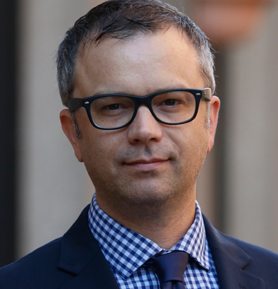
James Wright
Editorial Manager
Global Aquaculture Alliance
Portsmouth, NH, USA
Tagged With
Related Posts
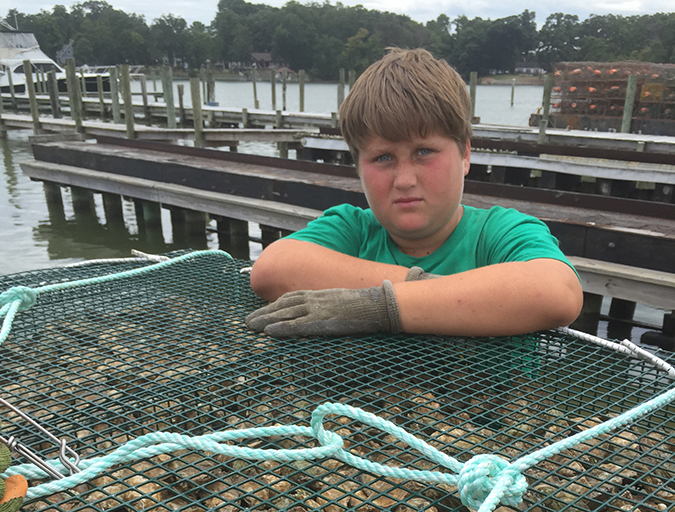
Responsibility
Ailing waterways hail the oyster’s return
The Lower Hudson Estuary and Chesapeake Bay, two waterways once home to thriving oyster beds, would welcome the shellfish’s return. Aquaculture initiatives in both areas aim to reinvigorate the water and the communities they support.
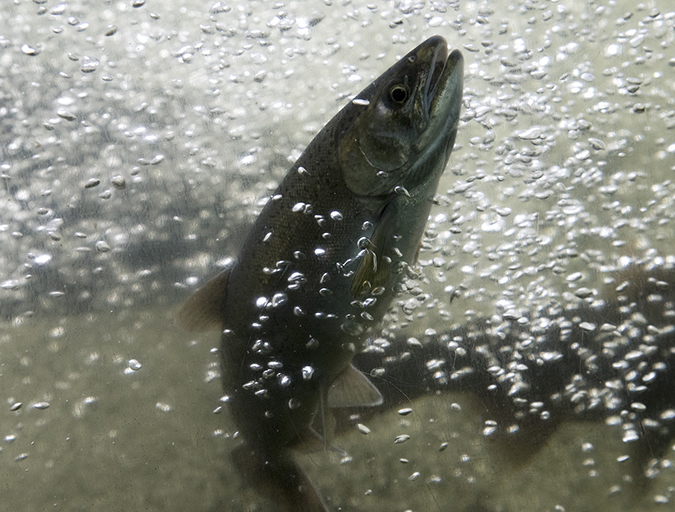
Intelligence
U.S. organic aquaculture standards inch along
Could the labyrinthine U.S. government approval process be nearing an end? Or could organic seafood encounter more delays? Both scenarios seem possible, considering the political opposition and the slight bending of organic principles that would be necessary.
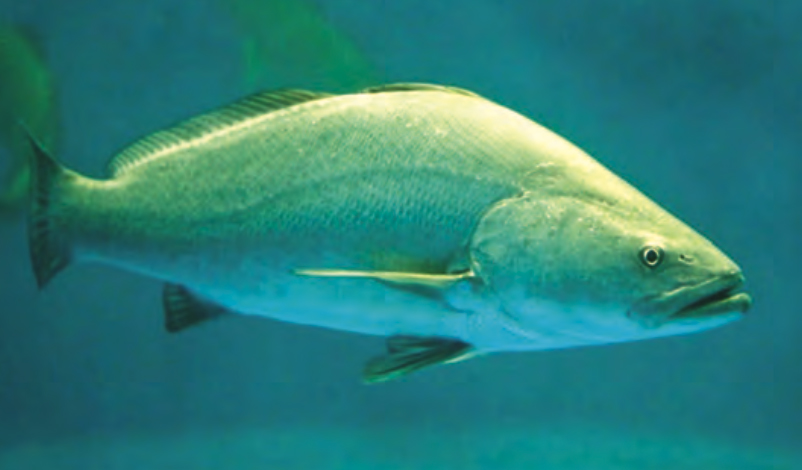
Responsibility
Aquaculture gives endangered totoaba a fighting chance
The tenuous fate of a pint-sized porpoise, the critically endangered vaquita, is linked to a fish targeted by poachers fueling China’s appetite for maws. The vaquita remains in peril, but aquaculture presents some hope for the totoaba.
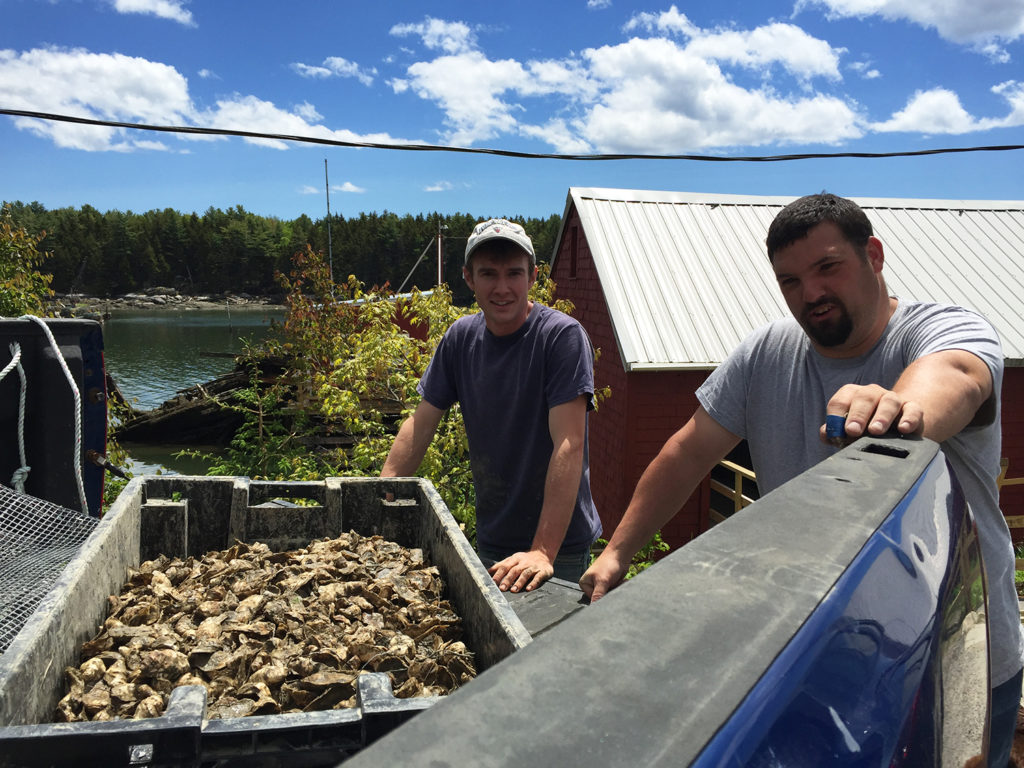
Responsibility
Repurposing Maine: Aging fishing facilities find new life with aquaculture
Some Maine lobster fishermen are turning to aquaculture in a quest to diversify and give defunct lobster pounds a second chance to produce local seafood.


